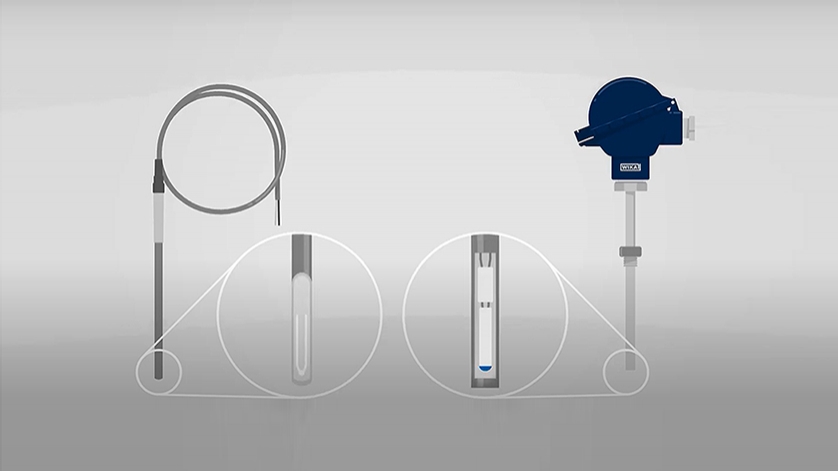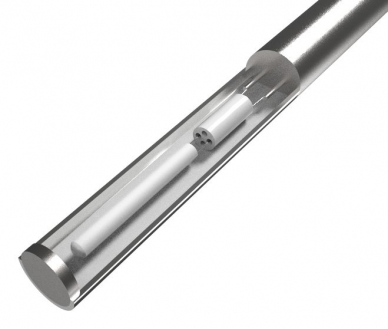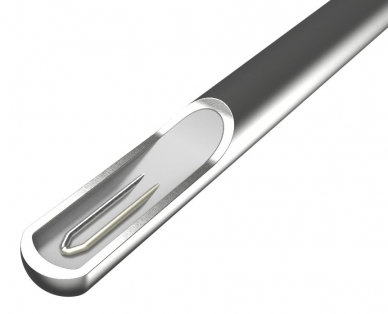
In temperature calibration, high demands are placed on reference thermometers in terms of accuracy and reproducibility and thus long-term stability. Therefore, RTDs (“resistance temperature detectors”) – here specifically platinum resistance thermometers – and thermocouples are used in laboratories. Although they have a similar function, in many respects they could not be more different.
When selecting an instrument for temperature measurement or calibration, the following key factors should be considered:
- Accuracy
- Long-term stability
- Temperature range
- Ambient conditions
Functionality and areas of application of a resistance thermometer

Fig.: Cross-section of a resistance thermometer
In a resistance thermometer (RTD), the resistance is measured via an electrical conductor, whereby there is a clearly defined relationship between resistance and temperature, which can be represented in a characteristic curve. In calibration technology, mainly wire-wound measuring resistors made of platinum are used as references (PRT), because these have a high temperature range, long-lasting stability and the highest accuracy. The wire can be wound around either a ceramic or a glass core.
The most common PRT is a Pt100. This is a platinum resistance thermometer that has exactly 100 ohms of electrical resistance at zero degrees Celsius. Other PRTs, although less commonly used, are the Pt25 and the Pt1000, which have a resistance of 25 ohms and 1,000 ohms respectively at zero degrees Celsius.
Functionality and areas of application of a thermocouple

Fig.: Cross-section of a thermocouple
Thermocouples use a different method for determining temperature. A thermocouple consists of two wires made of different metals such as nickel, copper or iron. The temperature at the measuring point causes the charges in the wires to shift differently, resulting in an electrical voltage that can be measured. Here, too, there is a defined dependency between temperature and electrical voltage, which is why the temperature at the measuring point can be determined. Although thermocouples usually have a lower accuracy and stability than RTDs, they have a wider temperature range. Thermocouples can measure temperatures up to 200 °C and 2,500 °C.
Depending on the material used, thermocouples are calibrated for specific ranges. Some of the most common types are J, K, T and E, which are considered “base metal” thermocouples. Thermocouples made of “noble metals” such as R, S and B, on the other hand, are less common and are mainly used in high-temperature applications.
Note
Further information on our reference resistance thermometers and thermocouples can be found on the WIKA website. Would you like to buy thermcouples? In our WIKA online-shop you will find some of our standard designs. If you have any questions on temperature calibration, your contact will gladly help you.
Learn more about how resistance thermometers and thermocouples work in the following videos:

